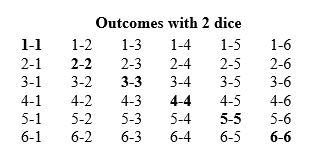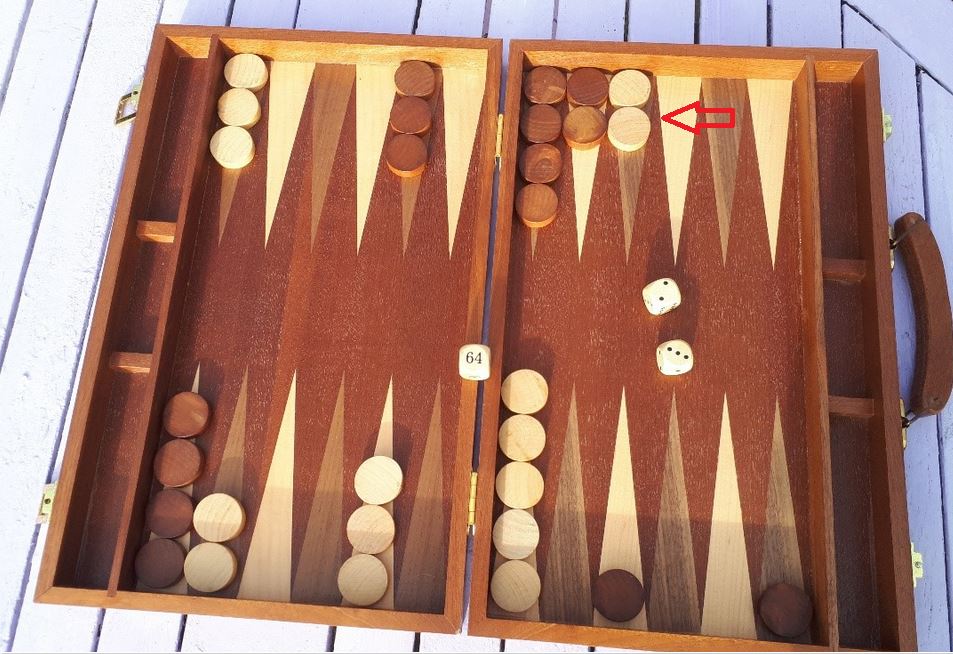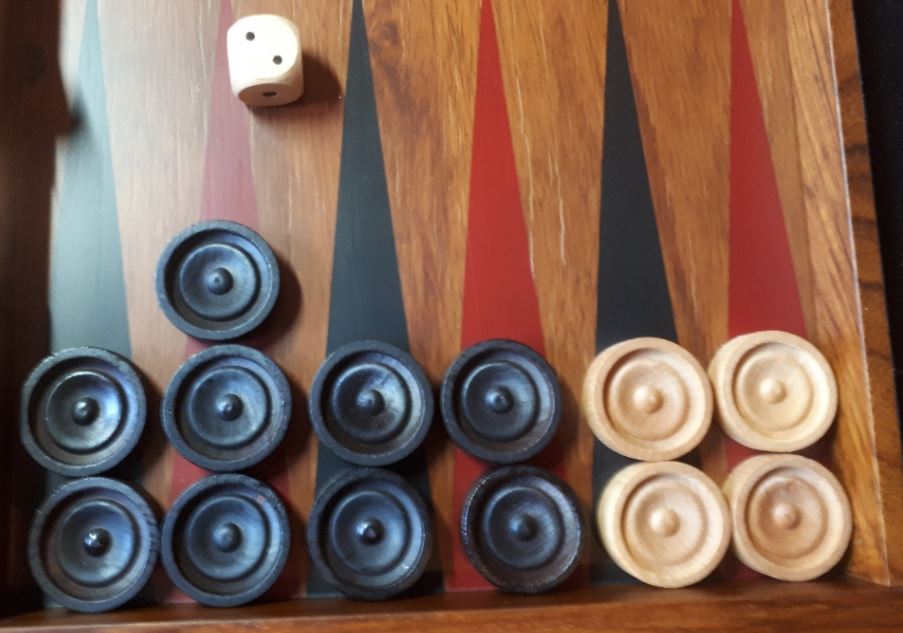Last updated on April 27, 2024
The theory behind the opening moves in backgammon is well documented. However, less is written about the opening replies. In this Deluxe Backgammon post for beginners, we will take a look at the opening replies and suggest the general principles that should be considered.
Dice combinations
The player who wins the opening roll of a backgammon game is faced with one of only 15 possible dice combinations. This is because doubles are excluded from the 36 possible rolls and half of the remaining 30 rolls are duplicates. In subsequent rolls, the doubles are included, so there are 21 possible rolls excluding the duplicates. There are about 25 reasonable ways to play the opening moves. This means the player going second is faced with 25 possible board positions x 21 possible rolls, which is 525 potential opening reply combinations. That is a lot of combinations to remember. Unless you have a photographic memory or the mind of a genius, it will not be possible to memorise all 525 combinations. Instead, we need to rely on a set of general principles to apply to the opening replies.
During the opening stages of play, both players will be trying to establish an advantage. The focus will be on the tactics of hitting, securing key points, splitting and creating builders. The results of these tactics will allow the players to select the appropriate strategies during the course of play. Backgammon is a very fluid game and the required strategy can change several times during the course of play.
Hitting
Hitting should be a priority in the opening reply. If the opponent hasn’t secured a point on the opening move there will be blots to be hit. Target those blots that are closest to their home board first. This is because they have more pip counts to lose and it will send them further back in the race. Also, try to hit those blots that are on key points, such as either 5-point. If possible, cover the hit with the second roll. Alternatively, if you can hit two checkers, take the chance and strike, it may create the opportunity for a blitz.
Securing points
If you can’t hit, the next best option is to secure a point. This can be done with the rolls of 3-1, 4-2, 5-3, 6-1 and 6-4 as per the opening moves. In addition, you can secure points with any double roll. For example, a roll of 4-4 could be used to advance your back checkers 24/20 (2) and move two down from the mid-point, 13/9(2). This gives you the important advanced anchor in the opponent’s home board and some secure builders in your outer board. It is often beneficial if you can make improvements to the structure of both sides of the board in a single turn. Securing points in your own home board provides a distinct tactical advantage as every secure point makes it more difficult for your opponent’s back checkers to escape.
Splitting
If you can’t hit or secure a block, then splitting the back checkers is a good option. At some point, these checkers have to escape the opponent’s home board in order to win. In the early stages of the game, fewer obstacles are in the way. It also increases the chances of being able to secure an advanced anchor and provides an attacking option for any blots that are in range. Splitting might look dangerous because you are leaving two vulnerable blots in the opponent’s home board. However, if you are hit, you are only going to lose a handful of pips. Also, it should be relatively easy to re-enter early in the game. If the opponent does attack, they risk a retaliatory strike on re-entry which sends the checker a long way back in the race.
Home board strength
Another option is to try and mirror your opponent’s moves, particularly those that secure points in the home board. The relative strength of the opposing home boards can dictate the styles of play. The player with the stronger home board, the one with the greater number of secure points, will generally be able to adopt the more aggressive style of play. The player with the weaker board will have to play defensively. This is because they will find it more difficult to return from the bar if hit.
It is not just the number of secure points that are important, but the number of key points that are held. In the home board, these are generally considered to be the 6, 5 and 4-points. However, the bar-point is also valuable as it prevents the back checkers on the 1-point from escaping with a 6. Additionally, if the points form a prime it is more valuable than if there are gaps in the home board. Therefore, holding the 6 through to 3-points will be considered more valuable than holding the 6-point and the 3 to 1-points.
Builders
If none of the above tactics is suitable for the opening reply moving a builder from a stacked point can help to develop your position. Developing your position means improving the overall structure of the board in order to create flexibility. Builders are checkers that have been moved into position in the hope of using it to create a point on a subsequent roll. To achieve this, you may need to take some risks by slotting or splitting checkers. These risks involve leaving blots as builders to secure a valuable point on subsequent rolls. Slotting is a useful tactic to help build primes. It’s generally low risk to leave blots in your outer board. However, avoid leaving them within range of a direct hit (6 or less).
Although some moves are obvious time should be taken to consider all of your options. It is very easy to focus your attention on a single section of the board and miss a better opportunity elsewhere. It is good practice to review all of your checkers individually on every move. In addition, look for commitments your opponent has made after the opening move and consider whether you can exploit them, making a bold play that would normally be too risky. For example, if a player slots the 5-point, they are committing to securing it on the next turn. Unless they roll a double, they will only be able to play one other checker elsewhere if they secure the 5-point. This means you can play more aggressively in your outfield and leave a blot where they can’t hit it.
Apply these backgammon principles to your opening replies and your game will improve.
Related content
The 5 best opening rolls in backgammon.
An in-depth look at the opening replies from The Fortuitous Press.




Interesting post, very informative. Are these backgammon principles listed in order of importance? Hitting, Securing points and Splitting?
Hi Steve, generally yes. Although it will depend a lot on your style of play in backgammon. If you are a defensive player, and a lot of backgammon beginners are, you might prefer securing a point over hitting. Most intermediate backgammon players and above would hit, secure and split, in that order of preference. Thanks for taking the time to comment. Jason